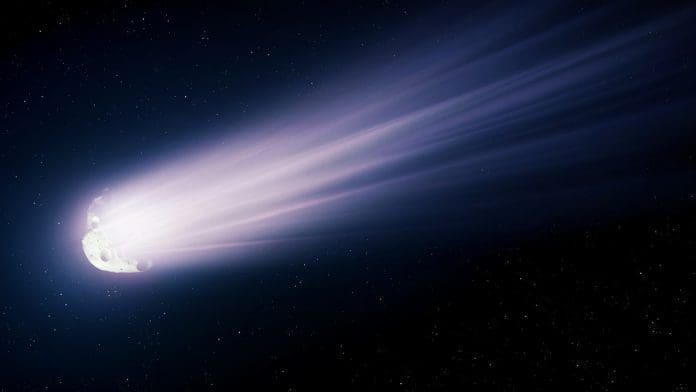The interstellar comet 3I/ATLAS reached its closest approach to the sun on October 29 and 30 behind the sun as viewed from Earth, offering a rare glimpse into material from beyond our solar system.
The comet, discovered on July 1, 2025, by the Asteroid Terrestrial-impact Last Alert System telescope in Chile, is the third known interstellar object to pass through our solar system after 1I/Oumuamua in 2017 and 2I/Borisov in 2019.
The comet passed solar conjunction on October 21, meaning it appeared on the opposite side of the sun from Earth, making ground observations temporarily impossible. The comet will reach perihelion at approximately 1.4 astronomical units (210 million kilometers) from the sun, just inside the orbit of Mars.
National Aeronautics and Space Administration assets including the Hubble Space Telescope, James Webb Space Telescope, and spacecraft near Mars have been tracking the visitor. Hubble observations indicate the comet’s nucleus diameter is between 440 meters and 5.6 kilometers.
Dr. Bryce Bolin, lead author of a study on the comet, stated, “It’s like an aeon-old fridge, which will open during the next months to release some of its contents.”
The comet is an active object consisting of a solid icy nucleus and a coma, which is a cloud of gas and icy dust escaping from the nucleus. Spectroscopic observations have detected water ice, carbon dioxide, cyanide, and nickel in the comet’s coma.
The comet poses no threat to Earth and will remain approximately 270 million kilometers away at its closest approach on December 19. After passing Earth, it will pass 54 million kilometers from Jupiter on March 16, 2026, before continuing its journey into interstellar space.
Observations from the Southern African Large Telescope in Sutherland, South Africa, revealed the comet has a rotational period of 16.16 hours and exhibits increasing dust activity.
November and December will present ideal observation conditions as the comet emerges from behind the sun with increased brightness from its recent perihelion passage. The comet is expected to reach magnitude 10 in early November, visible through telescopes but not to the naked eye.
Observations suggest the comet may be between 3 and 14 billion years old, potentially older than our 4.6 billion year old solar system. Researchers think the comet was flung from its parent star system by a close encounter with a giant planet or another nearby star.
Source: newsghana.com.gh











